May 22, 2025 | 13:05 GMT +7
May 22, 2025 | 13:05 GMT +7
Hotline: 0913.378.918
May 22, 2025 | 13:05 GMT +7
Hotline: 0913.378.918
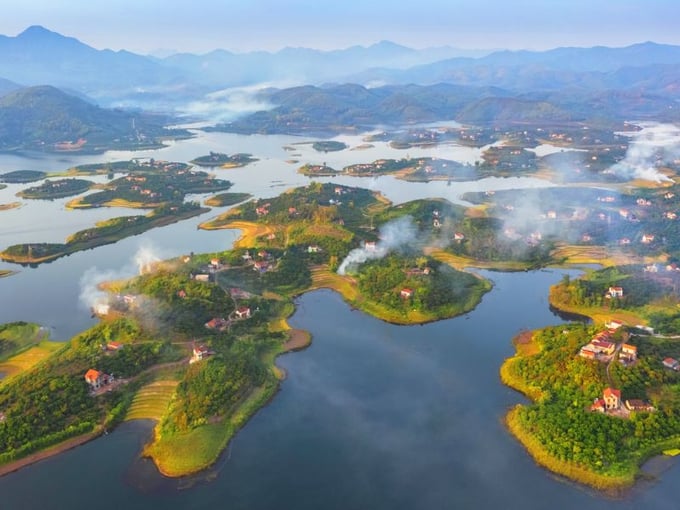
The Cam Son Reservoir construction began in February 1966 and started storing water by the end of July 1969. In 1974, the main infrastructure of the Cam Son Reservoir and the upgraded and expanded components of the Cau Son Irrigation System were officially handed over for operation. Photo: Tung Dinh.
According to Mr. Vu Ba Thanh, Deputy Director of Bac Song Thuong Irrigation Works Exploitation Co., Ltd., the irrigation systems that the company manages provide irrigation water to 24,100 hectares of cultivated land in the provinces of Bac Giang and Lang Son. Furthermore, the reservoirs are responsible for the regulation of water, the prevention of floods, and the mitigation of flood impacts in downstream areas.
In 2008, the reservoir underwent construction of a second spillway with a flood design frequency of 0.5% and a flood check frequency of 0.1%, as well as restoration and upgrading. We also created a flood map for the downstream region. Bac Giang province had invested in the installation of specialized monitoring equipment, including software for flood regulation calculations, and the establishment of protection boundaries by 2023.
However, structural issues have emerged since the project's construction, particularly during periods of extensive heavy rainfall, such as the recent Typhoon No. 3. Mr. Thanh addressed concerns regarding Spillway No. 1, which uses a manually operated radial gate system that is unable to regulating the discharge rate once it has been opened. "Even a minor tear in the gate's seal makes it extremely difficult to operate, and it is restricted for repair or replacement during periods of high floodwater," he elaborated.
Furthermore, releasing water to ensure the reservoir's safety during high river levels downstream in the Thuong River has caused additional flooding and damage to low-lying areas along the riverbanks, threatening the safety of the Thuong River's dyke system.
Mr. Thanh underscored the necessity of incorporating advanced technology into flood regulation calculations to improve their efficacy, in addition to operational management experience from previous years, in light of the response to natural disasters like Typhoon No. 3. The goal of this approach is to achieve an optimal balance between the two objectives of minimizing downstream damage and assuring the safety of infrastructure.
Among the 31 reservoirs managed by Bac Song Thuong Company, five have been identified as degraded: Khuon Than, Cay Da, Va Khe, Khoanh Song, and Da Coc.
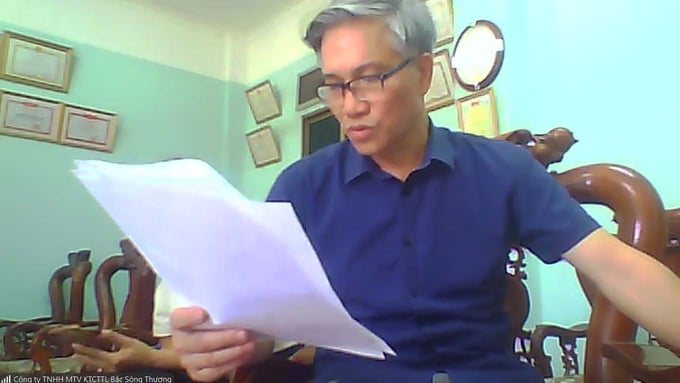
Mr. Vu Ba Thanh, Deputy Director of Bac Song Thuong Irrigation Works Exploitation Co., Ltd joining the Forum online. Photo: Tung Dinh.
Mr. Thanh underscored the significance of consistent inspections and monitoring of structural components to promptly identify anomalies, thereby facilitating timely interventions and reporting. He shared the lessons he had learned. In order to enhance the efficacy of flood regulation, it is imperative to supplement accumulated operational experience with advanced technology.
In order to generate compelling flood release proposals, operational management units must proactively collaborate with important entities, including meteorological centers and flood regulation consultants.
The Cam Son Reservoir repair project has received MARD approval for revised basic designs. Upon its completion, it will solve numerous deficiencies in flood regulation. The company has proposed that MARD allocate additional funding from reserve budgets for critical tasks, including the building of a flood warning system for downstream areas and the updating of flood maps. The current map is over 13 years old and no longer optimally represents the substantial changes in downstream conditions.
Additionally, infrastructure checks should be incorporated into the project, as the reservoir, which was constructed in 1969, has not yet been subjected to such assessments. MARD is urged to allocate funds for the project's implementation, and maintenance protocols for the Cam Son Reservoir infrastructure must be devised and approved.
In addition, the company is seeking MARD's assistance in obtaining funding to restore and enhance the five degraded reservoirs mentioned earlier, as local budgets are severely restricted.
According to Mr. Luong Van Anh, the Deputy Director of the Department of Water Resources, Vietnam has a total storage capacity of approximately 15.2 billion cubic meters and more than 7,300 irrigation dams and reservoirs. Four critically essential reservoirs and one inter-provincial reservoir are under the management of units under MARD, while the remaining eight inter-provincial reservoirs are under the management of local authorities. 63 provincial technical management units are responsible for the management of over 6,700 reservoirs at the local level, which accounts for over 2,300 reservoirs (34% of the total). The majority of the reservoirs, approximately 4,200, are small, with district and communal organizations overseeing them.
Irrigation reservoirs are legally required to operate in accordance with an operation plan that has been approved and has been made publicly available. Nevertheless, only 28% of reservoirs currently have such plans in place, which includes 1,600 ungated spillway reservoirs and 213 gated spillway reservoirs. The operation is mainly reliant on weather forecasts as a result of the absence of rainfall monitoring equipment in the reservoir areas.
Bac Song Thuong Irrigation Works Exploitation Co., Ltd. is a state-owned enterprise under the Bac Giang Provincial People’s Committee, operating in the public irrigation sector.
The company is responsible for managing irrigation systems north of the Thuong River in Bac Giang province, ensuring stable water supply and drainage for 70,308 hectares of agricultural land across six districts and cities, including Lang Giang, Luc Nam, northeastern Yen Dung district, Luc Ngan, Son Dong, and part of Bac Giang city. It also serves as a source of water for the domestic and socio-economic development requirements of the communes located along the river in Huu Lung district, Lang Son province.
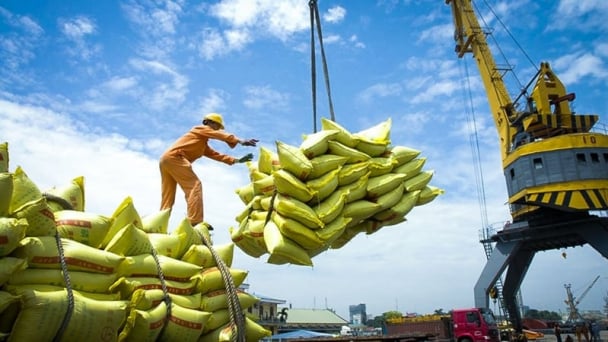
(VAN) The draft amendment to the Circular on rice export trading stipulates a periodic reporting regime for rice exporting enterprises.
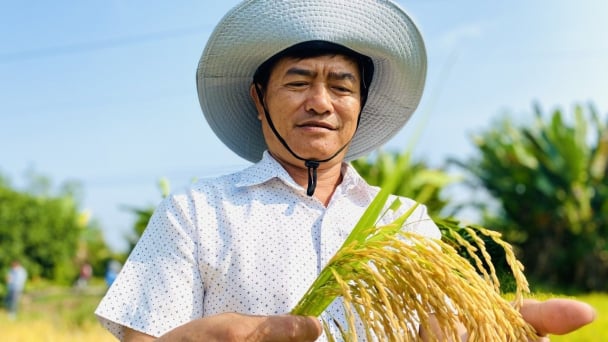
(VAN) Dong Thap farmers attained an average profit margin of 64% during the summer-autumn 2024 crop (first season), while An Giang and Kien Giang farmers followed with 56% and 54%, respectively.
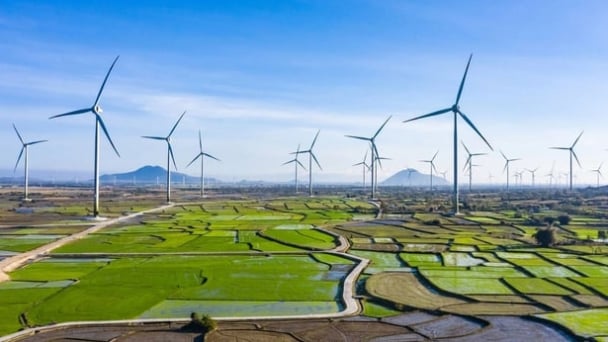
(VAN) As a doctoral student doing research on renewable energy and electrification at Harvard University, the author shares his musings on electricity, nature, and countryside memories.
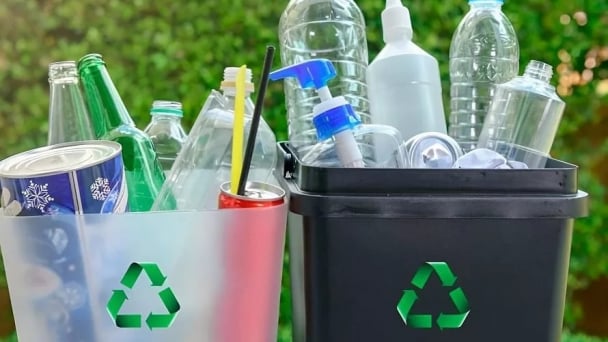
(VAN) The decree on Extended Producer Responsibility (EPR) ensures transparent management and disbursement of support funds, avoiding the creation of a “give-and-take” mechanism.
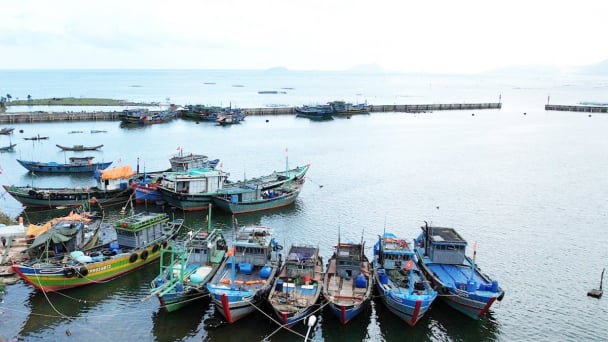
(VAN) Hue City rigorously enforces regulations regarding marine fishing and resource exploitation, with a particular emphasis on the monitoring of fishing vessels to prevent illegal, unreported, and unregulated (IUU) fishing.
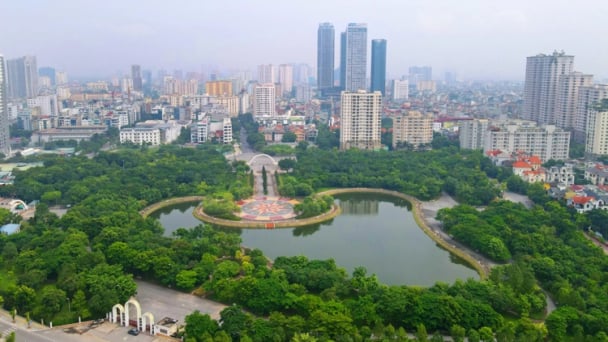
(VAN) Hanoi People's Committee has issued a plan on reducing greenhouse gas emissions in the waste management sector with 2030 vision.
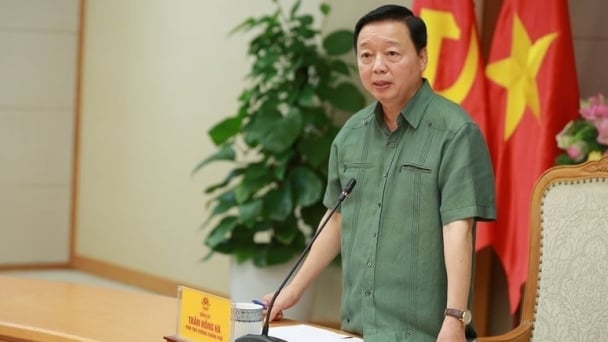
(VAN) Vietnam's draft amendment to Decree No. 156 proposes a mechanism for medicinal herb farming under forest canopies, linking economic development to population retention and the sustainable protection and development of forests.